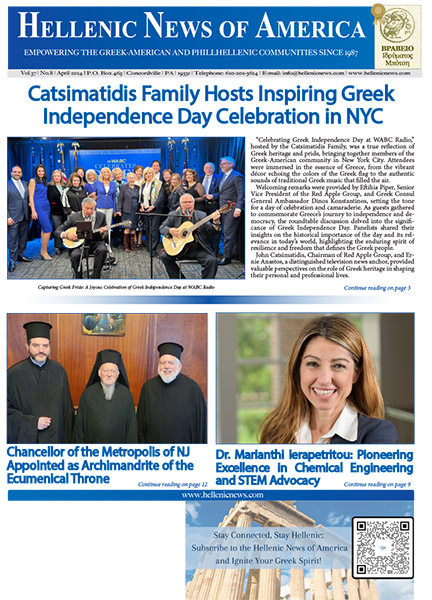For the spiritual nourishment of any readers over these next couple of days, I have a second, longer post here today. The following is from Photis Kontoglou in Greek, the person responsible for the revival of Byzantine iconography in the 20th century. This is for our Greek readers. Then, followed are words from a sermon on the Dormition by Saint Gregory Palamas in English and something as well from Saint Nikolai Velimirovich of Serbia.
Χρόνια πολλά και καλή Παναγιά! Η Παναγία μαζί μας, με την Ελλάδα και όλο τον Ορθόδοξο λαό σε όλη την οικουμένη! Ας μην ξεχάσουμε την Μάνα μας, ειδικά σε αυτές τις δύσκολες ημέρες που περνάει η Πατρίδα και ο κόσμος γενικά! Let us not forget our Mother! A blessed feast to everyone! Most Holy Theotokos, save us!
———
Φώτης Κόντογλου
Η Χαρά των Χριστιανών
Ελληνική Δημιουργία, τ.61, 1959,
https://www.myriobiblos.gr/texts/greek/theotokos_2002_kontoglou3.html
Η Παναγία είναι το πνευματικό στόλισμα της ορθοδοξίας. Για μας τους Έλληνες είναι η πονεμένη μητέρα, η παρηγορήτρια κ’ η προστάτρια, που μας παραστέκεται σε κάθε περίσταση. Σε κάθε μέρος της Ελλάδας είναι χτισμένες αμέτρητες εκκλησιές και μοναστήρια, παλάτια αυτηνής της ταπεινής βασίλισσας, κι’ ένα σωρό ρημοκλήσια, μέσα στα βουνά, στους κάμπους και στα νησιά, μοσκοβολημένα από την παρθενική και πνευματική ευωδία της. Μέσα στο καθένα απ’ αυτά βρίσκεται το παληό και σεβάσμιο εικόνισμά της με το μελαχροινό και χρυσοκέρινο πρόσωπό της, που το βρέχουνε ολοένα τα δάκρυα του βασανισμένου λαού μας, γιατί δεν έχουμε άλλη να μας βοηθήσει, παρεκτός από την Παναγία, «άλλην γαρ ουκ έχομεν αμαρτωλοί προς Θεόν εν κινδύνοις και θλίψεσιν αεί μεσιτείαν, οι κατακαμπτόμενοι υπό πταισμάτων πολλών». Το κάλλος της Παναγίας δεν είναι κάλλος σαρκικό, αλλά πνευματικό, γιατί εκεί που υπάρχει ο πόνος κ’ η αγιότητα, υπάρχει μονάχα κάλλος πνευματικό. Το σαρκικό κάλλος φέρνει τη σαρκική έξαψη, ενώ το πνευματικό κάλλος φέρνει κατάνυξη, σεβασμό κι’ αγνή αγάπη. Αυτό το κάλλος έχει η Παναγία. Κι ‘ αυτό το κάλλος είναι αποτυπωμένο στα ελληνικά εικονίσματά της που τα κάνανε άνθρωποι ευσεβείς οπού νηστεύανε και ψέλνανε και βρισκόντανε σε συντριβή καρδίας και σε πνευματική καθαρότητα. Στην όψη της Παναγίας έχει τυπωθεί αυτό το μυστικό κάλλος που τραβά σαν μαγνήτης τις ευσεβείς ψυχές και τις ησυχάζει και τις παρηγορά. Κι’ αυτή η πνευματική ευωδία είναι το λεγόμενο Χαροποιόν Πένθος που μας χαρίζει η θρησκεία του Χριστού, ένα βότανο άγνωστο στους ανθρώπους που δεν πήγανε κοντά σ’ αυτόν τον καλόν ποιμένα. Τούτη τη χαροποιά λύπη την έχουνε όλα όσα έκανε η ορθόδοξη τέχνη, και τα ευωδιάζει σαν σμύρνα και σαν αλόη, καν εικόνισμα είναι, καν υμνωδία, καν ψαλμωδία, καν χειρόγραφο, καν άμφια, καν λόγος, καν κίνημα, καν ευλογία, καν χαιρετισμός, καν μοναστήρι, καν κελλί καν σκαλιστό ξύλο, καν κέντημα, καν καντήλι, καν αναλόγι, καν μανουάλι, ότι και νάναι αγιωτικό.
Από τα ονόματα και μόνο που έδωσε η ορθοδοξία στην Παναγία, και που μ’ αυτά την καταστόλισε, όχι σαν είδωλο θεατρικό, όπως γίνηκε αλλού που φορτώσανε μια κούκλα με δαχτυλίδια και σκουλαρήκια και με ένα σωρό άλλα ανίερα και ανόητα πράγματα, λοιπόν αυτά μοναχά, λέγω, φαίνεται πόσο πνευματική αληθινά είναι η λατρεία της Παναγίας στην ελληνική ορθοδοξία. Πρώτα-πρώτα το ένα αγιώτατο όνομά της: Παναγία. Ύστερα τα άλλα: Υπερευλογημένη, Θεοτόκος, Παναμώμητος, Τιμιωτέρα των Χερουβείμ και ενδοξωτέρα ασυγκρίτως των Σεραφείμ, Ζώσα και Άφθονος, Πηγή, Έμψυχος Κιβωτός, Άχραντος, Αμόλυντος, Κεχαριτωμένη, Αειμακάριστος και Παναμώμητος, Προστασία, Επακούουσα, Γρηγορούσα, Γοργοεπήκοος, Ηγιασμένος Ναός, Παράδεισος λογικός, Ρόδον το Αμάραντον, Χρυσούν Θυμιατήριον, Χρυσή Λυχνία, Μαναδόχος Στάμνος, Κλίμαξ Επουράνιος, Πρεσβεία θερμή, Τείχος απροσμάχητον, Ελέους Πηγή, του Κόσμου Καταφύγιον, Βασιλέως Καθέδρα, Χρυσοπλοκώτατος Πύργος και Δωδεκάτειχος Πόλις, Ηλιοστάλακτος Θρόνος, Σκέπη του Κόσμου, Δένδρον αγλαόκαρπον, Ξύλον ευσκιόφυλλον, Ακτίς νοητού ηλίου, Σιών αγία, Θεού κατοικητήριον, Επουράνιος Πύλη, Αδικουμένων προστάτις, Βακτηρία τυφλών, Θλιβομένων η χαρά, και χίλια δυο άλλα, που βρίσκονται μέσα στα βιβλία της εκκλησίας. Κοντά σ’ αυτά είναι και τα ονόματα που γράφουνε απάνω στα άγια εικονίσματά της οι αγιογράφοι: Οδηγήτρια, Γλυκοφιλούσα, Πλατυτέρα των Ουρανών, η Ελπίς των απελπισμένων, η Ταχεία Επίσκεψις, η Αμόλυντος, η Ελπίς των Χριστιανών, η Παραμυθία, η Ελεούσα κι άλλα πολλά, που γράφουνται από κάτω από τη συντομογραφία: ΜΗΡ ΘΥ, που θα πεί Μήτηρ Θεού. Πόση αγάπη, πόσο σέβας και πόσα κατανυκτικά δάκρυα φανερώνουνε μοναχά αυτά τα ονάματα, που δεν ειπωθήκανε σαν τα λόγια οπού βγαίνουνε εύκολα από το στόμα, αλλά που χαραχτήκανε στις ψυχές με πόνο και με ταπείνωση και με πίστη.
..Μα ολάκερη η Ελλάδα δεν υμνολογά την Παναγία μονάχα με τους ψαλτάδες και με τους παπάδες στις εκκλησιές, αλλά και με το κάθε τι της, με τα χωριά, με τα βουνά, με τα νησιά, πούχουνε τ’ αγιασμένο τ’ όνομά της. Τα καράβια βολτατζάρουνε στη δροσερή θάλασσα, ανοιχτά από τους κάβους πούναι χτισμένα τα μοναστήρια της, έχοντας στη πρύμνη σκαλισμένο τ’αγαπημένο και προσκυνητό όνομά της. Όποιος ταξιδεύει στα ελληνικά νερά, σ’ όποιο μέρος κι’ αν βρεθεί τη μέρα της Παναγίας, θαν ακούσει απ’ ανοιχτά τις καμπάνες απάνω από το πέλαγο. Άλλες έρχουνται από τ’ Άγιον Όρος που το λένε Περιβόλι της Παναγίας, άλλες από την Τήνο πούχει το ξακουστό παλάτι της, άλλες από την Σαλαμίνα που γιορτάζει η Φανερωμένη, άλλες από τη Μυτιλήνη, από την Παναγιά της Αγιάσσος και της Πέτρας, άλλες από το Μοναστήρι της Σίφνου, άλλες από τη Σκιάθο, άλλες από τη Νάξο, από κάθε νησί, από κάθε κάβο, από κάθε στεριά.
———-
Saint Gregory Palamas, Archbishop of Thessaloniki
From the Sermon on the Dormition of the Virgin Mary,
https://oca.org/FSsermons-details.asp?SID=4&ID=9
Therefore, the body which gave birth, is glorified together with the One Who is born, with glory befitting God, and it is raised together. The “Ark of Holiness” (Ps. 131 [132]: 8) is resurrected together with Christ, Who arose on the third day, as expressed in prophetic song. There was, moreover, the evidence for the Apostles of Her resurrection from the dead: the shroud and burial cloths, which remained in the grave, and which alone were found there by those who came to look things over: just as it had been with Her Son and Lord.
It was unnecessary that She should tarry a certain while upon the earth, as had Her Son and God; and therefore, She was taken directly from the grave into a celestial habitation, from whence She shines with a resplendant radiance, illuminating all the earth. For the faithful, this is something worthy of veneration, worthy of praise and of song…. In this way, She was at the start, “a little lower than the angels” (Ps. 8:6) in Her mortality, but this only served to the increase the majesty of the Mother of God. Therefore, it is entirely proper that everyone gather today and commune for the present Feast.
It is fitting that She who contained the One Who fills all things, and is above all, should Herself should surpass all and become foremost of all by Her virtues and utmost worthiness. Those things that through all the ages helped all the best individuals who ever lived to reach such virtue, and that which all those have individually by the grace of God, whether angels or men, She combines within Herself, and She alone brings them to fulfillment…. After death, she has found immortality, and in Her body dwells in Heaven together with Her Son and God. Therefore, She pours forth abundant grace on those honoring Her. She even bestows on us the boldness to hasten unto Her, for She is the vessel of so many graces. She distributes blessings generously on us, and never ceases this profitable bestowal and gracious help.
——–
Saint Nikolai Velimirovich of Serbia, Prologue From Ohrid,
https://www.westsrbdio.org/prolog/prolog.htm
The Lord Who, on Mt. Sinai, commanded by His Fifth Commandment: “Honor your father and your mother” (Exodus 20:12), showed by His own example how one should respect one’s parent. Hanging on the Cross in agony, He remembered His mother and indicating to the Apostle John, said to her: “Woman behold your son” (St. John 19:26). After that, He said to John: “Behold your mother” (St. John 19:27). And so providing for His mother, He breathed His last. John had a home on Zion in Jerusalem in which the Theotokos settled and remained there to live out the end of her days on earth. By her prayers, gentle counsels, meekness and patience, she greatly assisted the apostles of her Son. Primarily, she spent her entire time in Jerusalem often visiting those places which reminded her of the great events and of the great works of her Son. She especially visited Golgotha, Bethlehem and the Mount of Olives. Of her distant journeys, her visit to St. Ignatius the Theophorus [God-bearer] in Antioch is mentioned, as well as her visit to Lazarus (whom our Lord resurrected on the fourth day), the Bishop of Cyprus, her visit to the Holy Mountain [Athos] which she blessed and her stay in Ephesus with St. John the Evangelist [The Theologian] during the time of the great persecution of Christians in Jerusalem. In her old age, she often prayed to the Lord and her God on the Mount of Olives, the site of His Ascension, that He take her from this world as soon as possible. On one occasion, the Archangel Gabriel appeared to her and revealed to her that within three days she will find repose. The angel gave her a palm-branch to be carried at the time of her funeral procession. She returned to her home with great joy, desiring in her heart once more to see in this life, all of the apostles of Christ. The Lord fulfilled her wish and all of the apostles, borne by angels in the clouds, gathered at the same time at the home of John on Zion. With great rejoicing, she saw the holy apostles, encouraged them, counseled them and comforted them. Following that, she peacefully gave up her soul to God without any pain or physical illness. The apostles took the coffin with her body from which an aromatic fragrance emitted and, in the company of many Christians, bore it to the Garden of Gethsemane to the sepulchre of [her parents], Saints Joachim and Anna. By God’s Providence, they were concealed from the evil Jews by a cloud. Anthony, a Jewish priest, grabbed the coffin with his hands with the intention of overturning it but, at that moment, an angel of God severed both his hands. He then cried out to the apostles for help and was healed since declaring his faith in the Lord Jesus Christ. The Apostle Thomas was absent, again according to God’s Providence, in order that a new and all-glorious mystery of the Holy Theotokos would again be revealed. On the third day, Thomas arrived and desired to venerate [kiss] the body of the Holy All-pure one. But when the apostles opened the sepulchre, they found only the winding sheet and the body was not in the tomb. That evening, the Theotokos appeared to the apostles surrounded by a myriad of angels and said to them: “Rejoice, I will be with you always”. It is not exactly known how old the Theotokos was at the time of her Falling Asleep but the overwhelming opinion is that she was over sixty years of age.





